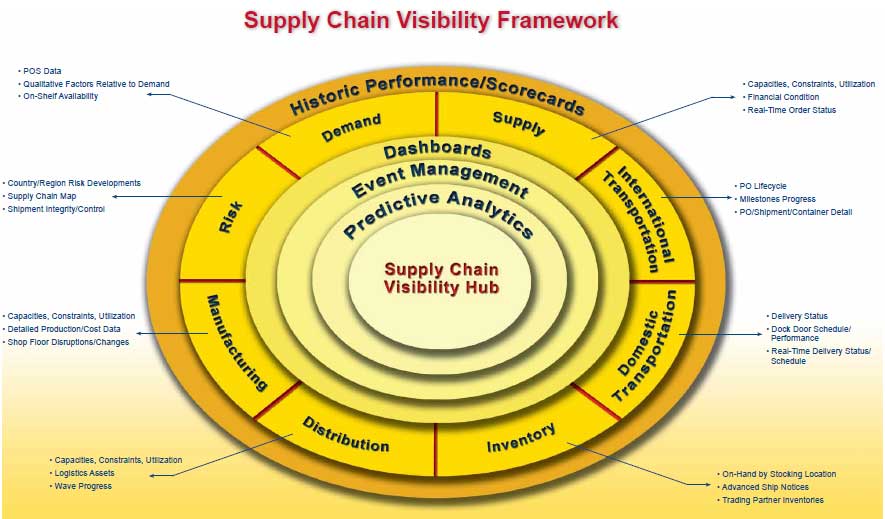• Recognize that Much/Most of the Information You Need Will be External: If you have outsourced or virtualized much of your supply chain, by definition
most of the data you need will reside outside your enterprise. This can be true even if a company has retained manufacturing and other functions internally. That in turn means connectivity becomes core to the visibility quest; we have found that some simply lack the will to make the effort.
However, an increasing number of cloud-based vendors have achieve significant pre-connectivity to hundreds of companies and logistics providers.

• Invest Effort in Non-Systematic Visibility: While we tend to think of visibility as something that is technology based, leaders often actually spend a lot effort to get at data and insight that can’t be captured systematically at the start. Cisco’s advanced Sales & Operations Planning process has matured to the point now that among the top concerns is finding out “qualitative information we can’t see” about market conditions, customer plans, etc., an executive there
recently said.
As Boeing’s 787 disaster fades and it now faces a flood of new orders, it is sending more than 100 supply chain managers and engineers into the field to work with suppliers on a regular basis --- sometimes daily --- to monitor schedules, inventories and other factors that could impact supply.
Many have heard the old saying that “What gets measured gets managed.” That’s certainly true, but we could now add a corollary that “You can only manage what you can see.”
The supply chain winners of the future may largely be the ones that have more information at their disposal, and use that information more smartly than their competitors.
Welcome to the visible supply chain.
What would you add in terms of keys to supply chain visibility success? Let us know your thoughts at the Feedback section below.
SCDigest is Twittering!
Follow us now at https://twitter.com/scdigest |